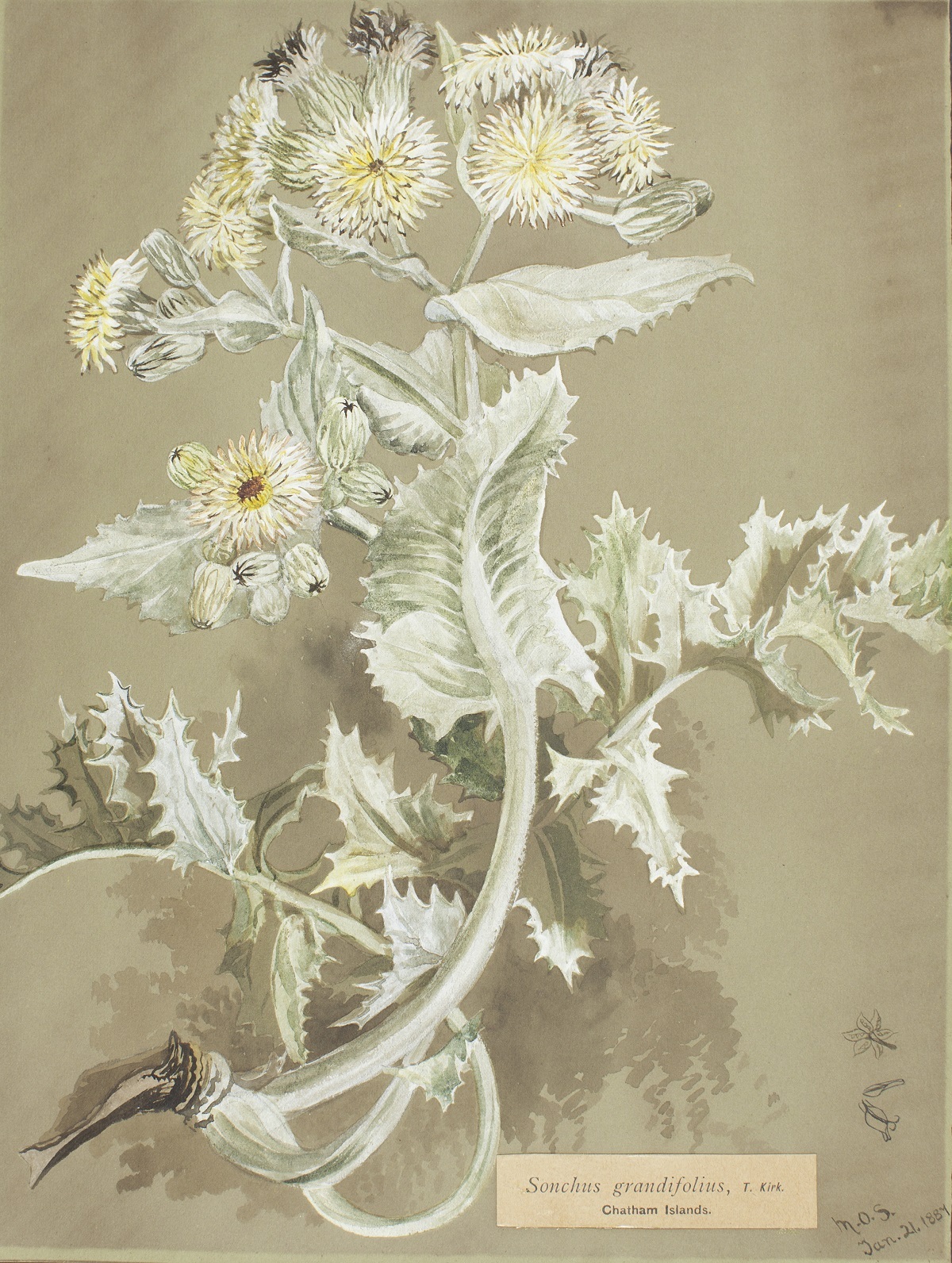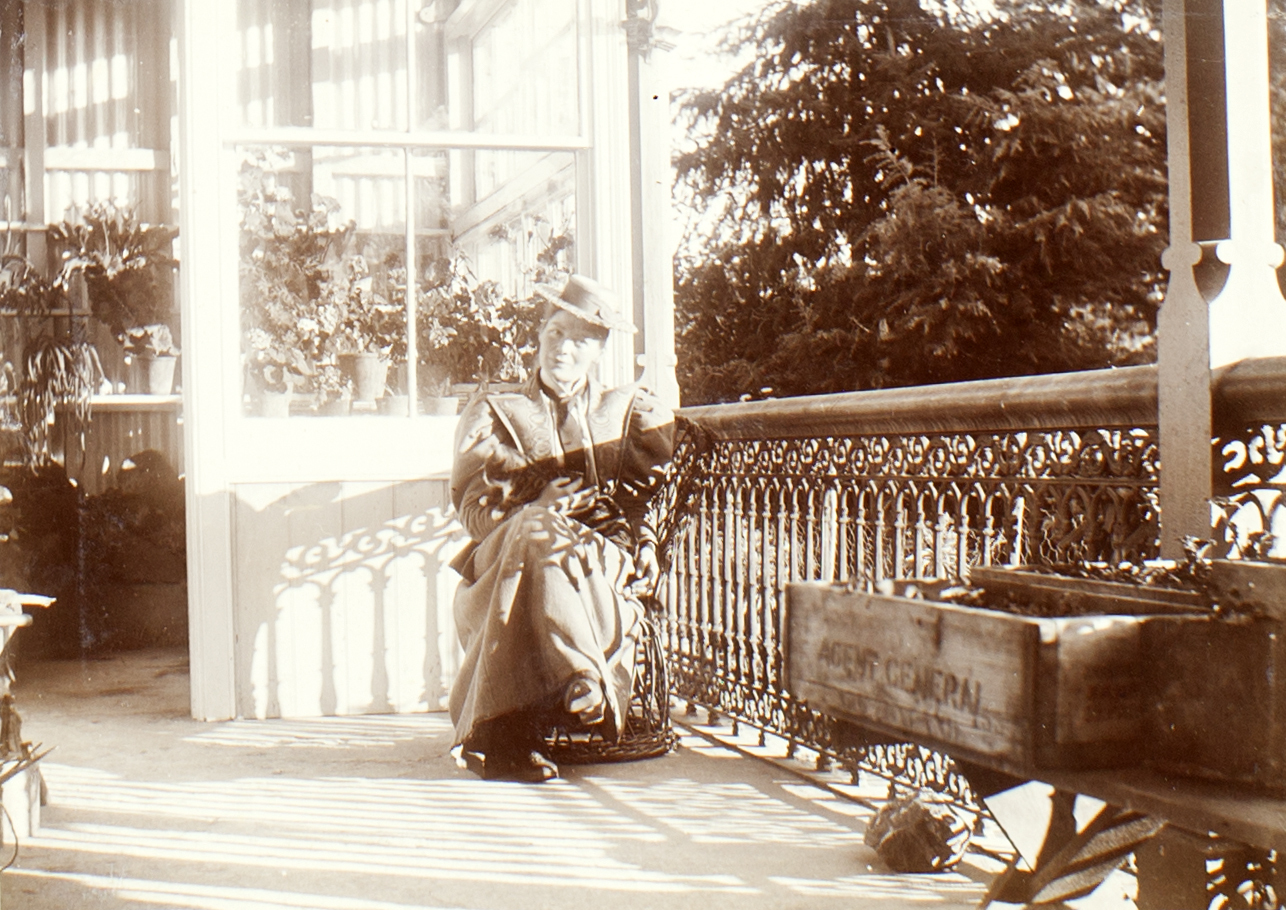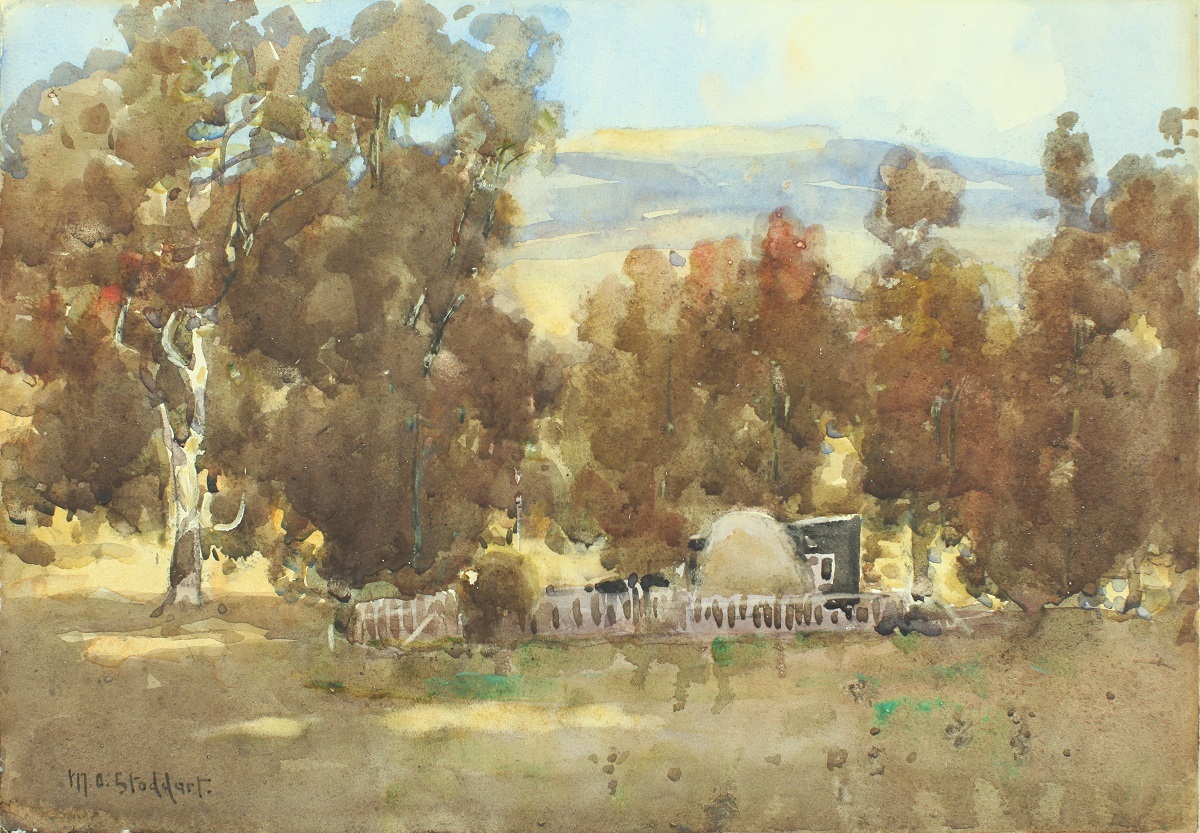Renowned local watercolour painter Margaret Stoddart was the second daughter of Mark and Anna Stoddart. Mark was an early Canterbury settler who gave Te Waipapa its English name of Diamond Harbour. Anna, originally from Norway, was working as a governess for the Rhodes family at Okains Bay when she married Mark in 1862.
Born in 1865 in Stoddart Cottage, Diamond Harbour, Margaret became one of New Zealand’s foremost flower painters and her works are held in several public institutions including Canterbury Museum. She was hugely prolific; a retrospective exhibition held by the Canterbury Society of Arts after her death in 1934 showed no less than 206 artworks.

Sonchus grandifolius watercolour painting by Margaret Stoddart. Canterbury Museum 1907.7.1
Margaret’s introduction to art came through botanical renderings of local native flora. Her father was a keen Victorian naturalist and amateur botanist. Together they often explored the area, recording their finds. Margaret studied art in Europe and also at the Canterbury College School of Art, where she was one of the first pupils when the school opened in 1882. Her expertise in depicting flowers flourished, encouraged at the time as an appropriate subject for young lady painters.
Margaret travelled to the Chatham Islands in 1886, staying with childhood friend Mabel Cudleigh, the daughter of naturalist Thomas Potts of Ohinetahi. While in the Chatham Islands she completed several botanical studies as well as paintings of local scenes which are now cared for in the Museum collection.

Canterbury Museum holds an impressive 85 botanical studies by Margaret Stoddart, gifted to the Museum in 1907 by the artist herself. The studies were completed between 1880 and 1897 and depict a huge array of plants from the prickly matagouri to the beautiful kōwhai; with everything in between such as rengarenga (rock) lilies, bush lawyer, Māori onions and ribbonwoods.
In 1898 Margaret left her family in Diamond Harbour and set off to England. She settled in St Ives, Cornwall, which was the centre of English Impressionism at the time. Here her interests broadened, her painting style loosened and landscape emerged as a principal theme.

Returning to Diamond Harbour in 1906, Margaret always intended to go back to Europe to paint but her sister Mary (known as May) died from complications during childbirth. Margaret, her sister Agnes and her ageing mother Anna lived together at the big house in Diamond Harbour (known as Godley House) and helped care for their niece, who lived in the nearby Stoddart Cottage with her father Richard Farmer.
Two years later Margaret’s mother died and in 1913 the Stoddart Estate was sold to the Lyttelton Borough Council, which decided to develop a garden suburb on the sunny south side of the harbour. The project was called the Lyttelton Trans-Harbour Scheme as the new suburb of Diamond Harbour and Lyttelton were to be connected by a ferry service. This was the beginning of Diamond Harbour township as we know it today.

Margaret, her sister Agnes and her niece Francie moved to Hackthorne Road and she continued to paint local scenes, working continuously in her confident style, until her death at Hanmer Springs in 1934, aged 69.
While Godley House was destroyed in the 2010 earthquake, Margaret’s birthplace, Stoddart Cottage, still remains. It has been fully restored and holds monthly exhibitions by artists and crafts people and is open to the public for viewing every weekend.
Margaret Stoddart's beautiful paintings are not currently on public view but we hope you have enjoyed this story about some of the treasures that we care for at the Museum.





